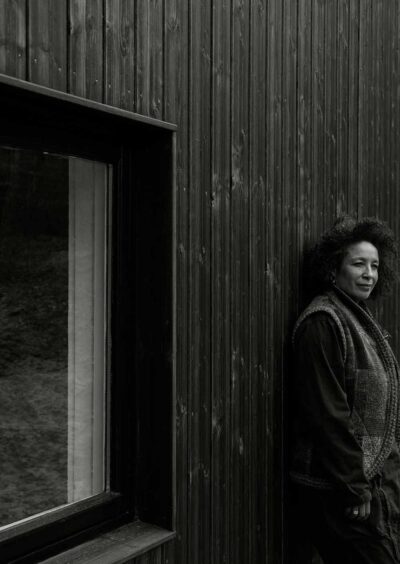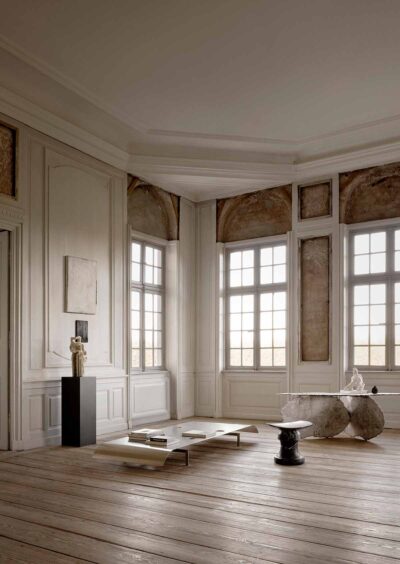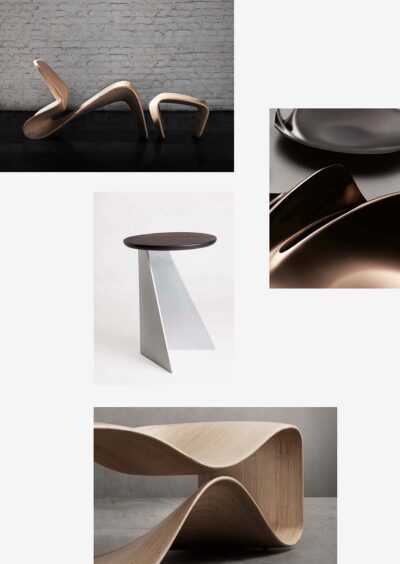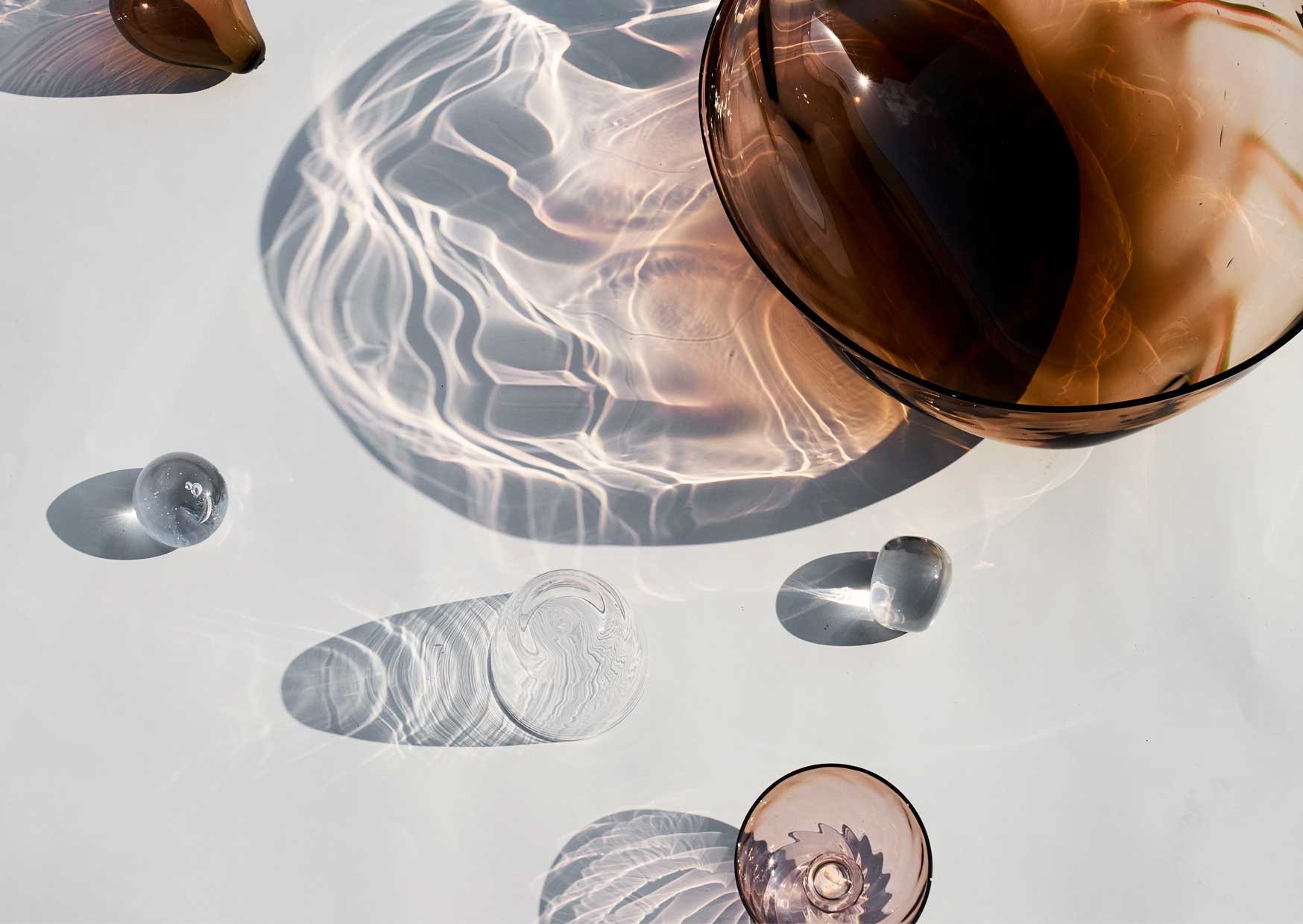
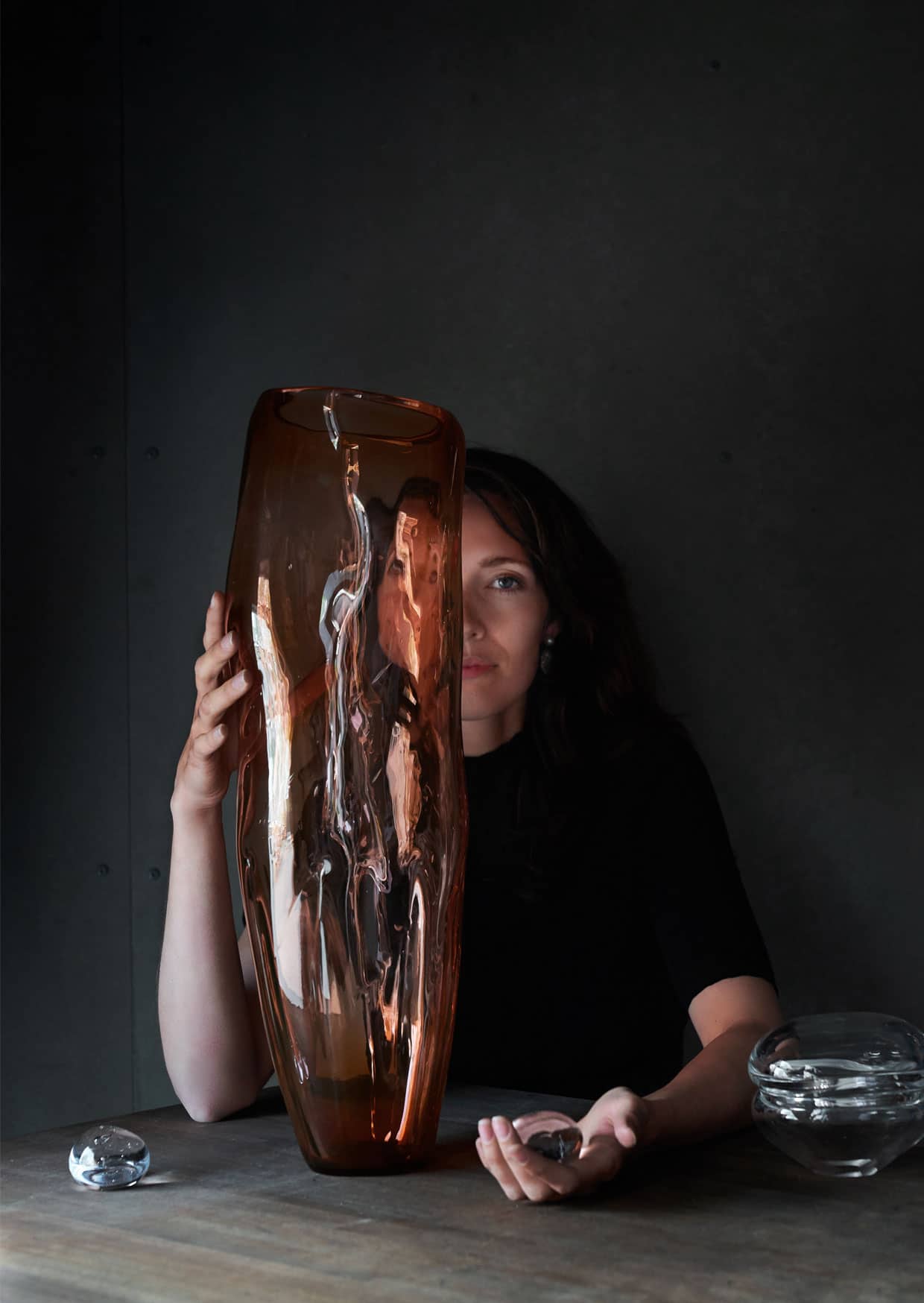
THROUGH A GLASS SOFTLY
portrait
Creating the right atmosphere brings all senses into play. Nina Nørgaard makes mouth-blown glasses that feel soft on your lips and age graciously.
When you drink from a mouth-blown glass it’s seductive and brings you closer to what’s in the glass. The way it touches the lips it’s softer than the thin, delicate edge we’re used to in an industrial wine glass. Usually glasses are made in two parts, you add the stem at the end. Mine are blown in one piece, pulling the stem out of the top and opening it on the other end. It’s merging ancient tradition from Syria with modern techniques.
It is spiritual to make glass this way, making the whole piece in one flow without breaking the lines of a liquid material. Coming out of the oven the day after, it is virgin glass glowing like never before. As we use it, mouth-blown glass ages more graciously. It is what I grew up drinking from, having a glassblower in the family.
Blowing freehand means there can be colour differences, the melting and the temperature give the raw glass its nuance. It’s also visually heavier, with lines, bubbles and variations. Most people will feel it is heavier than what they are used to. These elements play into the tactility and the psychology of interacting with a mouth-blown piece.
My Studio collection originates from glasses I produced for the original Noma restaurant, interlocking high function and tactility. It’s made with studio techniques, but also to be used all the time, to go in the dishwasher not the display cabinet.
I moved to Paris at 18 and lived a carefree life, paying no rent by working a few hours for an older woman who owned the building. Somehow, we were also given free rein to run a gallery in the Jardins du Palais Royal, above Rick Owens’ shop.
My Jazz objects remind me of this time, when we would live in a freer way with no commitments, smoking cigarettes and drinking Champagne. They represent the antithesis to functionality. Some are monochrome, while others layer colour as if gasoline was swirling in a puddle. A seafood plate mimics the surface of water, the irregularities made by waves and streams. When the seafood is lying there on ice, it gives the feeling of still being in the water.
This story was featured in The Paper, published by Ark Journal during 3daysofdesign 2019, as part of the Hotel Charlottenborg design exhibition.
AS TOLD TO ALISA LARSEN
PHOTOGRAPHY MISHAEL PHILLIP
JOURNEY’S END
A 90s portable church has found its home on a secluded hill in the forest, becoming a contemporary respite for creation and reflection for Josephine Akvama Hoffmeyer.
CASE STUDY
— DISSONANT BEAUTY
As in music, interior design calls on many elements – rhythm, contrast, repetition – to create that most subjective of visions: beauty.
DESIGN MUMBAI
India’s creativity, natural resources, extensive skills, technological advancements and deep historical roots deserve wider recognition and appreciation.

THROUGH A GLASS SOFTLY
portrait
Creating the right atmosphere brings all senses into play. Nina Nørgaard makes mouth-blown glasses that feel soft on your lips and age graciously.
When you drink from a mouth-blown glass it’s seductive and brings you closer to what’s in the glass. The way it touches the lips it’s softer than the thin, delicate edge we’re used to in an industrial wine glass. Usually glasses are made in two parts, you add the stem at the end. Mine are blown in one piece, pulling the stem out of the top and opening it on the other end. It’s merging ancient tradition from Syria with modern techniques.
It is spiritual to make glass this way, making the whole piece in one flow without breaking the lines of a liquid material. Coming out of the oven the day after, it is virgin glass glowing like never before. As we use it, mouth-blown glass ages more graciously. It is what I grew up drinking from, having a glassblower in the family.
Blowing freehand means there can be colour differences, the melting and the temperature give the raw glass its nuance. It’s also visually heavier, with lines, bubbles and variations. Most people will feel it is heavier than what they are used to. These elements play into the tactility and the psychology of interacting with a mouth-blown piece.
My Studio collection originates from glasses I produced for the original Noma restaurant, interlocking high function and tactility. It’s made with studio techniques, but also to be used all the time, to go in the dishwasher not the display cabinet.
I moved to Paris at 18 and lived a carefree life, paying no rent by working a few hours for an older woman who owned the building. Somehow, we were also given free rein to run a gallery in the Jardins du Palais Royal, above Rick Owens’ shop.
My Jazz objects remind me of this time, when we would live in a freer way with no commitments, smoking cigarettes and drinking Champagne. They represent the antithesis to functionality. Some are monochrome, while others layer colour as if gasoline was swirling in a puddle. A seafood plate mimics the surface of water, the irregularities made by waves and streams. When the seafood is lying there on ice, it gives the feeling of still being in the water.
This story was featured in The Paper, published by Ark Journal during 3daysofdesign 2019, as part of the Hotel Charlottenborg design exhibition.
AS TOLD TO ALISA LARSEN
PHOTOGRAPHY MISHAEL PHILLIP

